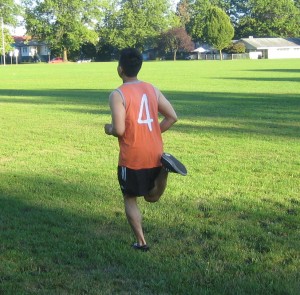It is a known that the body is highly effective and capable in regulating the body temperature. Once the external temperature increases, the body will steadily increase the production of sweat as well as the blood flow and respiratory rate to facilitate the cooling process of the body. Once the temperature is higher than 101 degrees or the humidity level is too high, the body will have a hard time maintaining a stable temperature. If this continues, it can lead to heat distress which is characterized by various levels of heat illness. If you will register in a first aid class, you will learn the appropriate measures to provide on heat-related disorders.
Temperature
The escalating body temperature is the most common sign if an individual is experiencing heat distress. At first, the temperature of the body will rise slightly up to 101 degrees. If the individual is left out in a warm environment, the body will eventually lose it ability to control the temperature and can go up higher than 106 degrees. Once the temperature increases, it can cause delirium, confusion, seizures and even coma.
Changes in the skin
The first apparent change in the skin is it becomes excessively sweaty. The body starts to sweat heavily in an attempt to cool down through evaporation. As the body loses its capability to produce sweat, the skin will become clammy and often pale in appearance. In no time, the skin dries out, turning red in color and hot to the touch. Take note that every stage represents a different level of heat distress, starting at heat exhaustion and progressing on to heatstroke.
What are the neurological signs?
The neurological signs will manifest as the escalating body temperature affects the functioning of the brain. The early symptoms include headache, dizziness, loss of muscle coordination and minor changes in the mental status such as anxiety or giddiness. Once the individual becomes more distressed, he/she will experience worsening of the mentioned symptoms along with confusion, behavior changes and even seizures and coma in the late stages.
Other signs to watch out for

One of the initial signs of heat exhaustion is nausea. It is accompanied by vomiting, thus aggravating the heat disorder with dehydration. There is also a rapid pulse that is common during the moderate stages of heat distress. In some cases, once heat distress causes multiple organ failure, urine retention and yellowish eyes can occur.
How to prevent heat distress?
The best way to prevent heat distress from developing is to properly hydrate the body. It is the easiest way to prevent the heat disorder. All you have to do is to drink enough fluids to replace what was lost through sweating. You can drink water and drinks that contain electrolytes such as sports drinks.
Wearing lightly colored, loose-fitting clothes will allow the body to lose heat through the skin. It is also important to take regular breaks under the shade during days with high humidity, especially if activities done are physically demanding.
